History of Valais Blacknose
Valais Blacknose originated in the Valais region of Switzerland. The breed is believed to date back to the 15th century, although they were first recognized as a breed in 1962. Efforts have been made to export the breed to other countries in Europe, however they are still very rare outside of Switzerland. They were imported to the UK in 2014 and several quality flocks were established. Raymond Irvine (Highland Flock) of Scotland and Jamie Wood ( Prendwick flock) of North Umberland are the premier UK breeders who have consistently produced maximum points Swiss quality sheep. Semen and embryos from maxium points in show winners and their offspring has been exported to New Zealand and show quality flocks have been established by Sally and Lindsay Strathbee and Christine Reed of New Zealand Valais Blacknose.
Breed Up Program
Semen first became available in North America in late 2017, early 2018. Solwaybank Commander was one of the first rams to be approved for semen exportation and therefore he is the sire of many of the first lambs in America. Semen was the only method available to reproduce Valais Blacknose in North America, until the summer of 2020 when the first embryos arrived in America . The very first purebred Valais lambs were born in the U.S in Spring of 2021. Our purebred ram “Indiana Jones” is the first purebred lamb to be born in Virginia. Purchase of embryos is expensive and the success of embryo transfer is not always optimal, so the breed up program remains the cornerstone of bringing the breed to the U.S. A quality breed up program involves careful selection of foundation ewes that closely match the characteristics of the Valais Blacknose. The breeds of choice are Scottish Blackface, Horned Dorset and white Icelandic. Other breeds are being used, with varying degrees of success.
In a Breed Up program, a carefully chosen foundation ewe is artificially inseminated with frozen semen from a 100% purebred Valais Blacknose. The artificial insemination procedure is laparoscopic and must be done by an experienced reproductive vet. Success rates vary depending on the vet’s experience and the health of the ewe. We recommend using a proven reproductive vet that has done at least 3000 procedures. There is a process for preparing your foundation ewe that can be done by the breeder, but some prefer to have a vet insert CIDR’s and give the shots.
The first generation of lambs born are called F1. If you have a ewe lamb, she will be the mother of your F2 lambs. LAI (Laproscopic artificial insemination) procedure is repeated using a different purebred semen at each generation. This is repeated from F1-F4 for ewes. At F4 ewes that meet breed standard can be registered as domestic purebreds. Ram lambs are neutered or wethered and not used for breeding until F5 is reached. At F5 a ram lamb can be registered as a domestic purebred if they meet the breed standard. Each generation, starting with the foundation ewe must have a DNA done to ensure the integrity of the program and pedigree. If a breeder is not including DNA on each generation, that is a red flag. Our farm is commited to producing Swiss quality sheep, and to reach our goal we will use only Maximum points genetics semen/embryos. Maximum points refers to a grading scale given by Swiss judges in Switzerland or the UK. Points are awarded in 3 areas: Confirmation, Wool and markings and points are based on age of the sheep. A sheep over 18 months is eligible for 6/6/6 points which is considered the maximum points that can be obtained. It is estimated that only 5% of Valais Blacknose will achieve maximum points in show. We have purposely bred each generation in our breed up program to achieve a Swiss quality Valais Blacknose flock.
What do F1, F2 and F3 lambs look like?
This is a question we get asked often. It is not always easy to answer due to variations in each generation and variations in the foundation ewes being used. VBISBAR recommends using a Scottish Blackface, Horned Dorset or White Icelandic ewe for a foundation. The most common breed being used as a foundation ewe is Scottish Blackface, so we have many examples of lambs in each generation and now in 2022 have the first F4 bred from a SBF foundation. A few breeders are using Horned Dorset and their lambs are coming along nicely. They do not have the heavy black markings, but tend to be fluffier. There are very few people using Icelandic foundations, so we have little to show of their offspring. The examples I am using are of my own sheep (all SBF foundations) or of fellow VBISBAR breeders who have offered their pictures for examples Every generation being bred up, MUST have horns. If a breeder is using a non horned foundation ewe, they are risking a great amount of money and time and may not produce a lamb with horns in each subsequent generation. Without horns you cannot meet the Swiss Standard and cannot register your sheep.
F1
An F1 is a 50% cross, so they retain characteristics of both parents. Typically F1 lambs have random black markings on the head and legs, and sometimes spots or larger black areas in the body. When a Scottish Blackface is used as a foundation you will see distinct black markings. Those bred from Horned Dorset do not have a lot of black markings, typically on the face only. There is very little wool on the face and usually none on the legs on F1s.
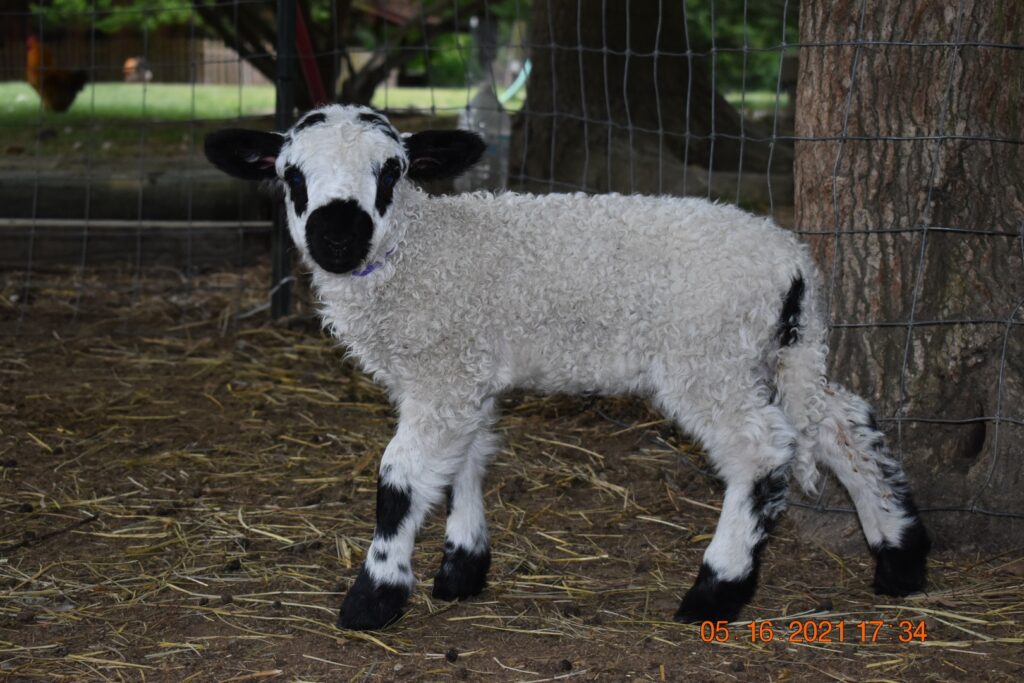
F1 Ikeira born May 2021.
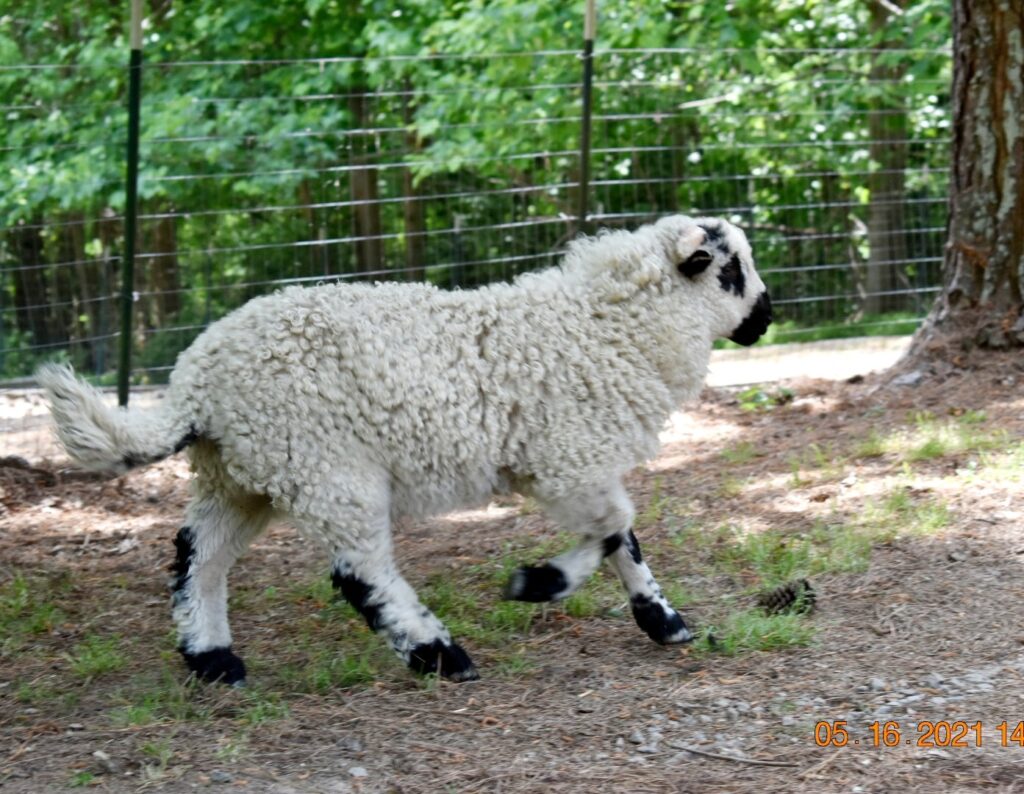
F1 Ivan born March 2021 at BoulderBrook Farm.
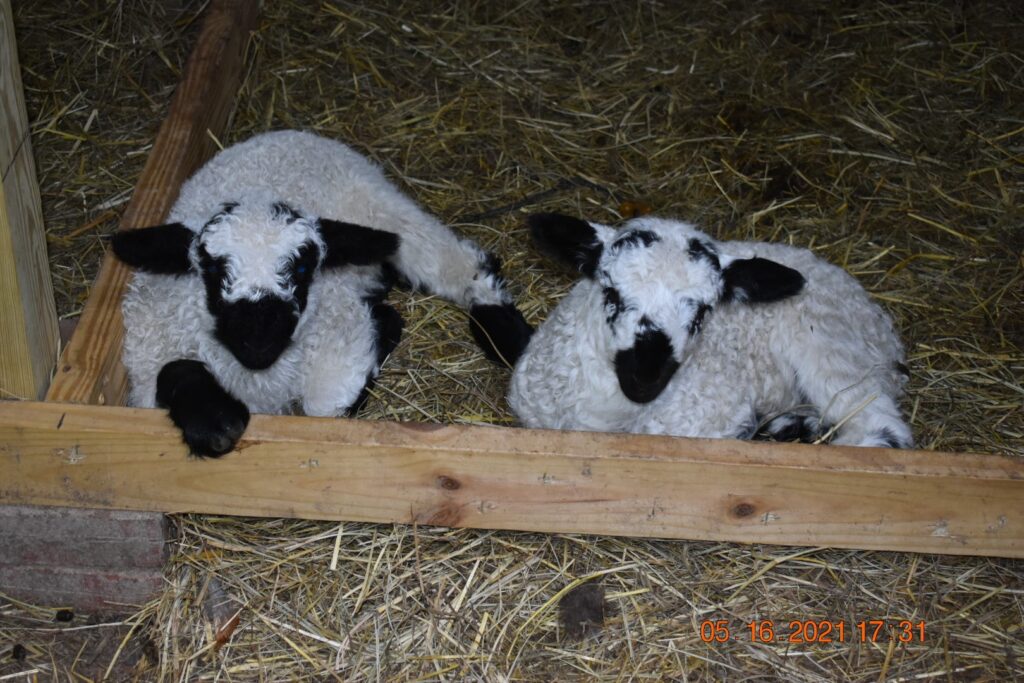
F1 Iris and Icelyn born May 2021 at BoulderBrook Farm.
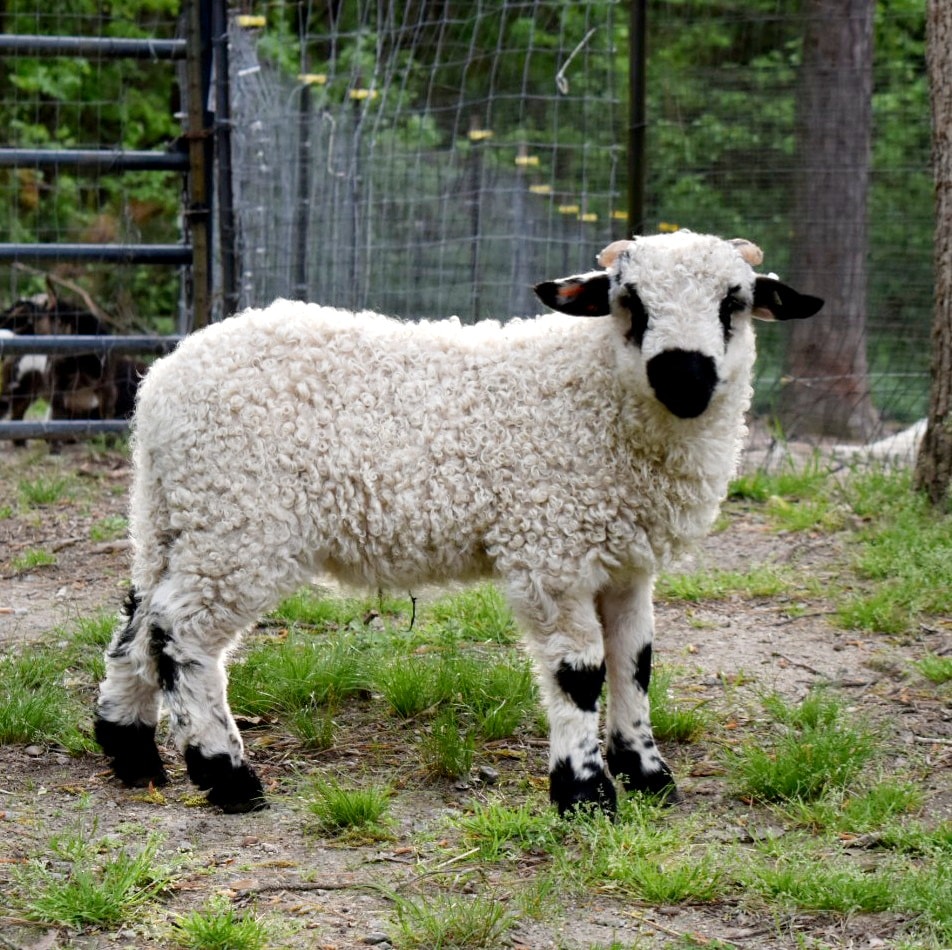
F1 Idaho Joe born March 2021 at BoulderBrook Farm.
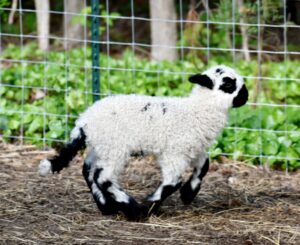
F1 Huckleberry born May 2020.
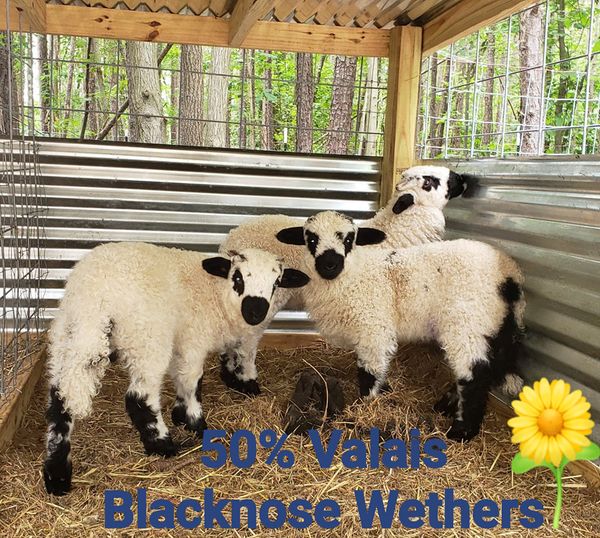
F1 Heineken, Huckleberry and Hot Shot.
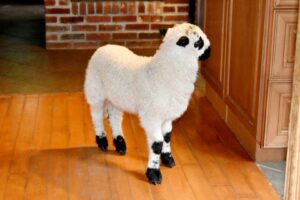
F1 Hot Shot adventuring in the house.
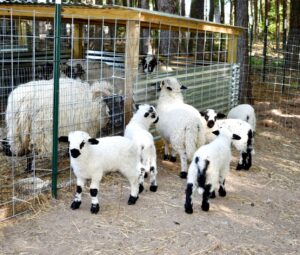
Group of 2020 F1 lambs.
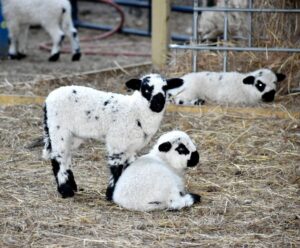
F1 twins HoneyBee and Heineken 2020.
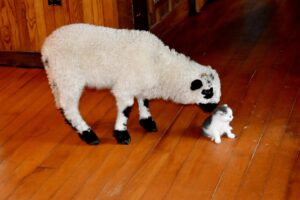
F1 HotShot with kitten. VB are very curious and gentle, even at the F1 generation.
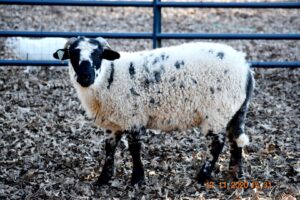
F1 HoneyBee at about 1 Year old.
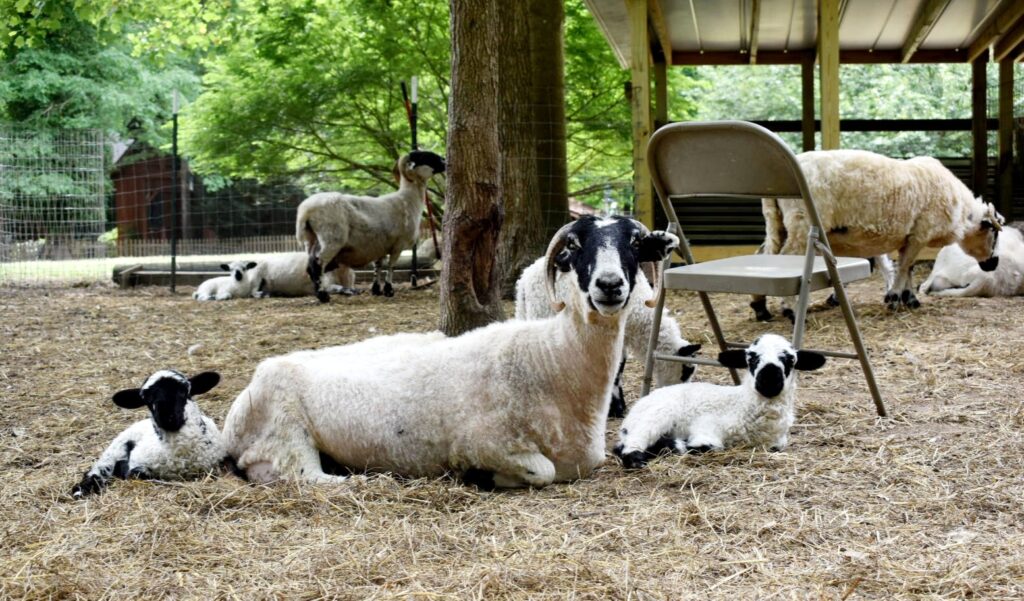
SBF Louise with F1 twins Iraina and Izmir born May 2021.
F2
An F2 cross is 75% Valais Blacknose. The lambs appearance will depend on the foundation ewe. As a general rule, F2 lambs begin to look more uniform with markings starting to tighten up on the head and legs. There is still variation, with some having all black legs or body spots. A select few will have all knee and hock markings, but the majority range from all white legs to some of the correct leg markings. Typically the black on the nose goes further up but usually does not meet the black around the eyes. The wool starts to cover part of the head ,. begins to grow on the legs and is much longer on the body vs. an F1. Horned Dorset F2s still are mostly white and the black on their nose gets larger. They also tend to be fluffier than SBF crosses. An F2 will definitely need to be sheared twice a year and this will be apparent even to the untrained eye.
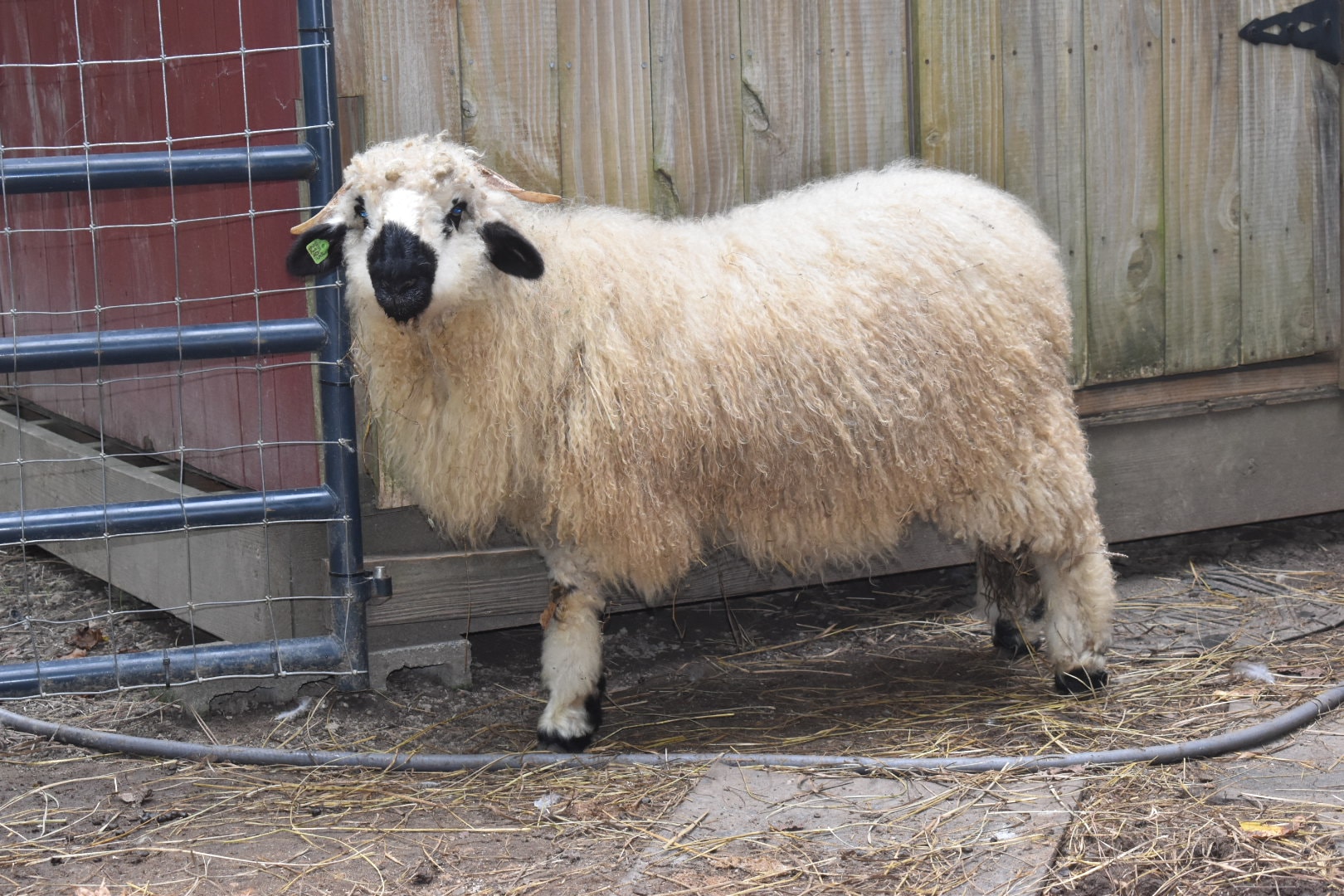
F2 Ivory born March 2021.
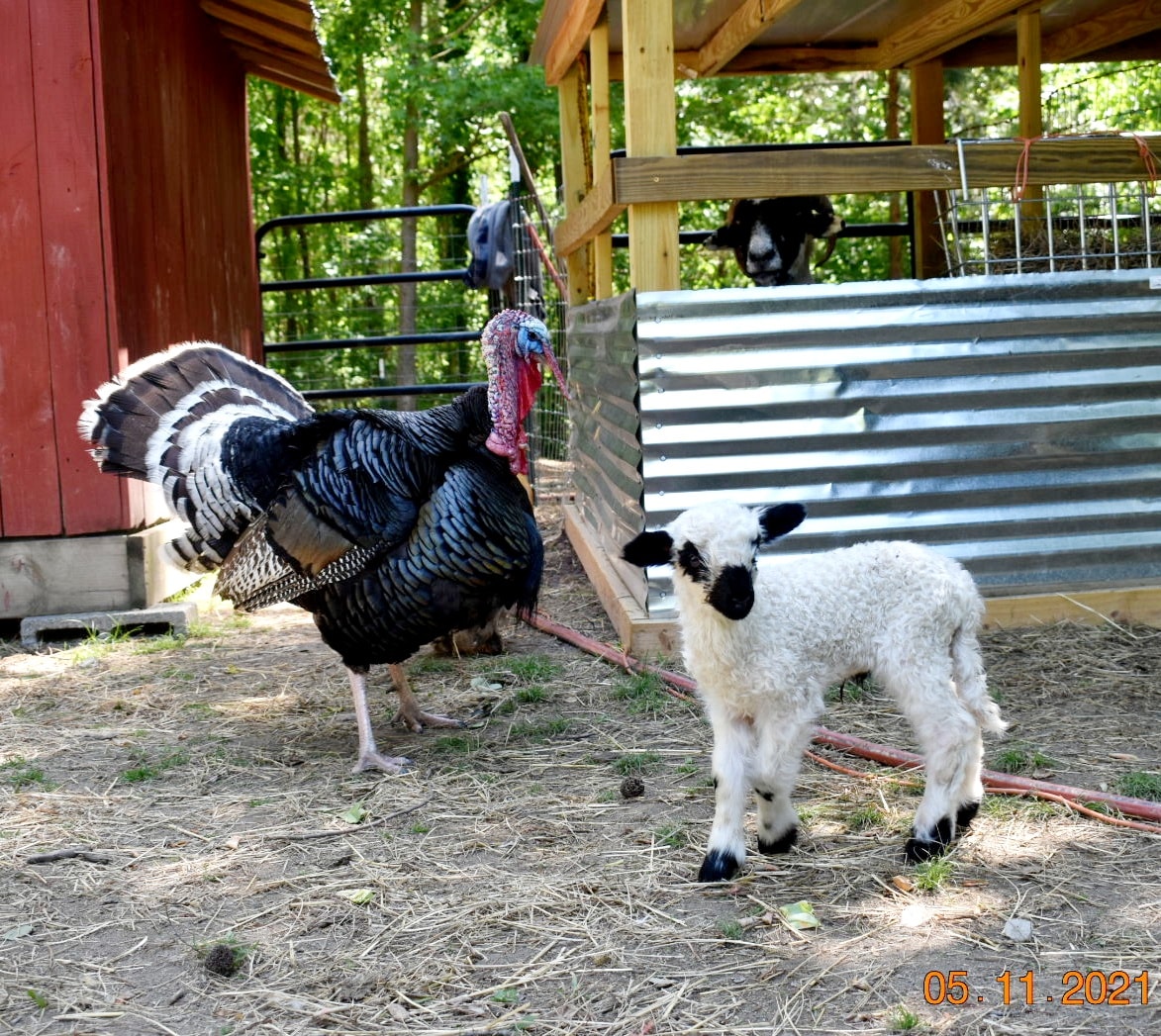
F2 Indigo with Benny the Turkey.
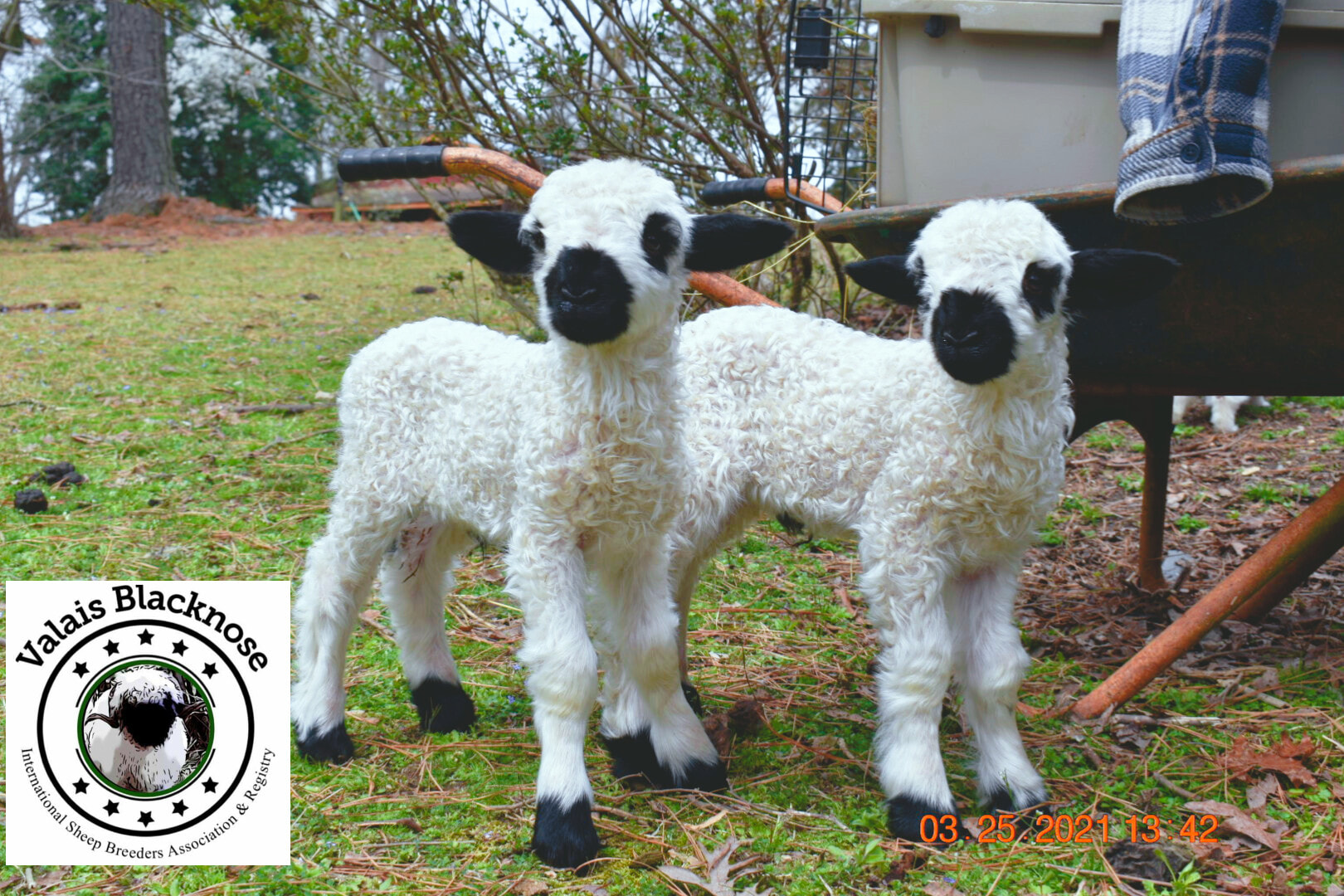
F2 twins Isaiah and Israel at 4 days old.
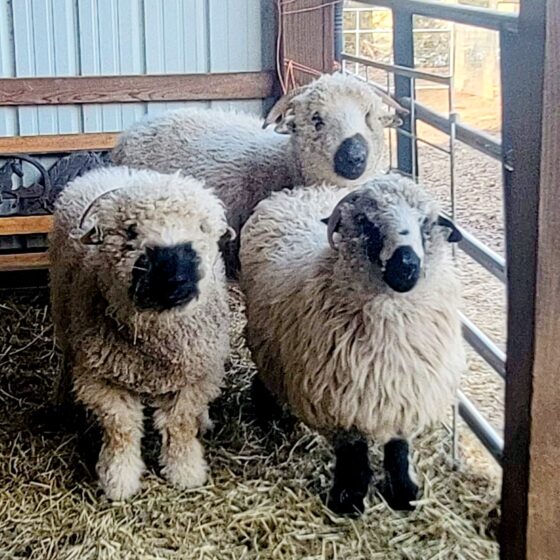
Back F1 from Horned Dorset, left front F2 from horned Dorset and right is an F1 from Scottish Blackface. All owned by Stacey Cullen of Tawney Falls Farm in Appomatox ,VA.
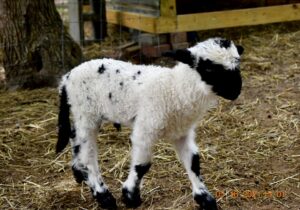
F2 Irish Thunder of BoulderBrook Farm.
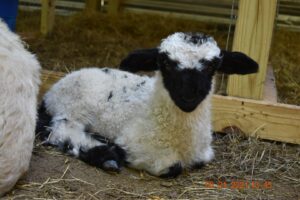
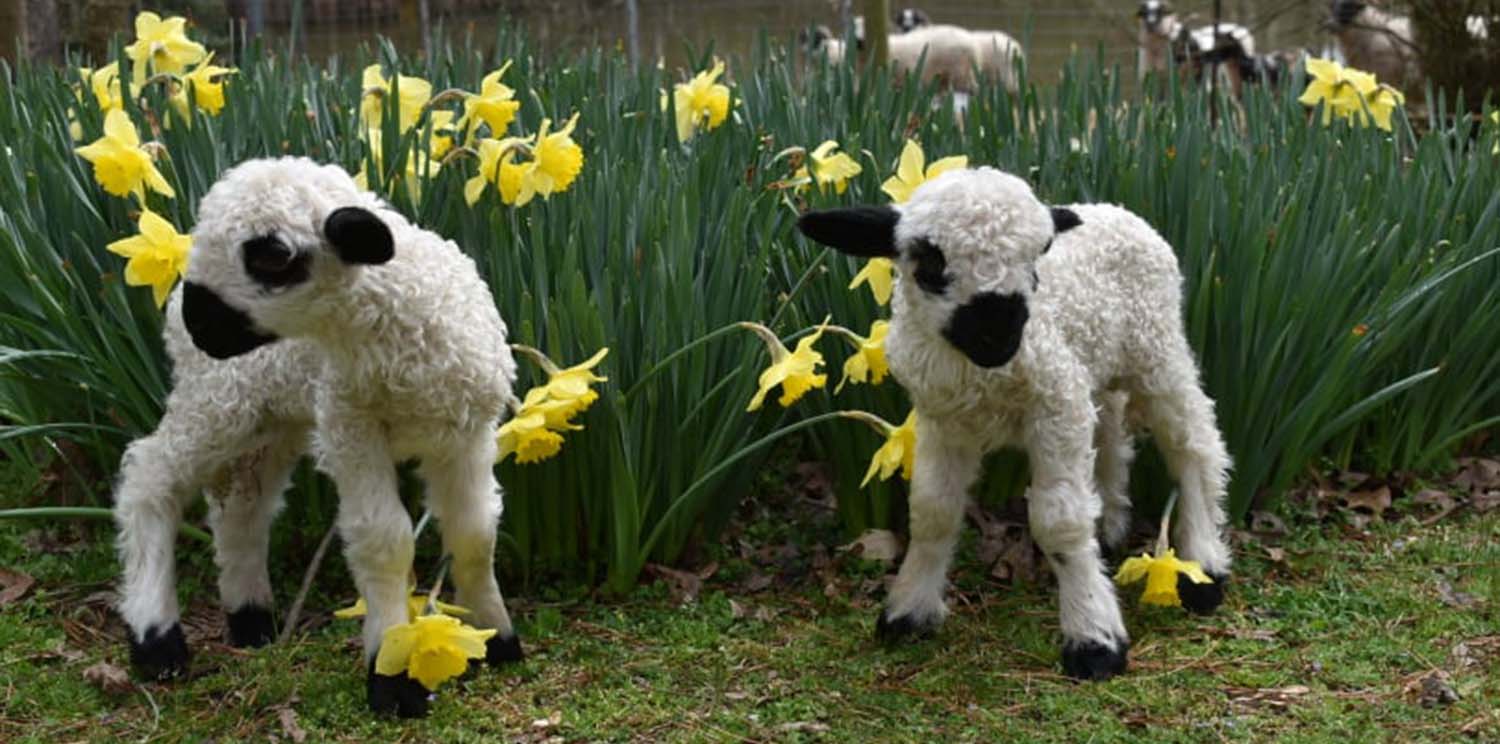
F2 Isaiah and Israel of BoulderBrook Farm.
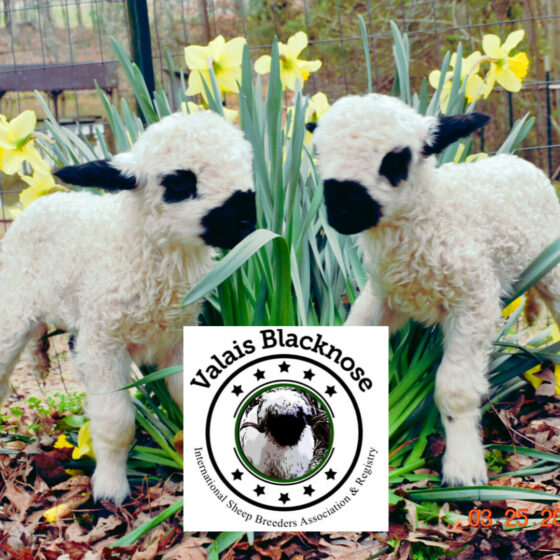
F3
At the F3 generation which is 87.5% Valais Blacknose, you are getting closer to purebred and many of the lambs can look just like purebred. However, now that more F3’s are being born, we are seeing that there is still some variation in their looks. Many have the look of a purebred with all 4 knee/hock marks, yet some still have excess black on their legs or an occasional missing hock/knee mark. There can be some spots in the body, but most will be white. The wool will be more profuse and cover more of the head and legs. The wool length is similar to a purebred. Below picture is an F3 out of a Scottish Blackface foundation and maximum points semen at each generation.
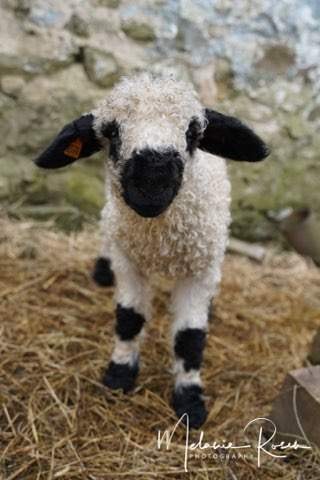
F3 January
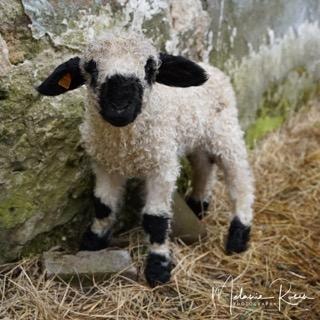
F4


